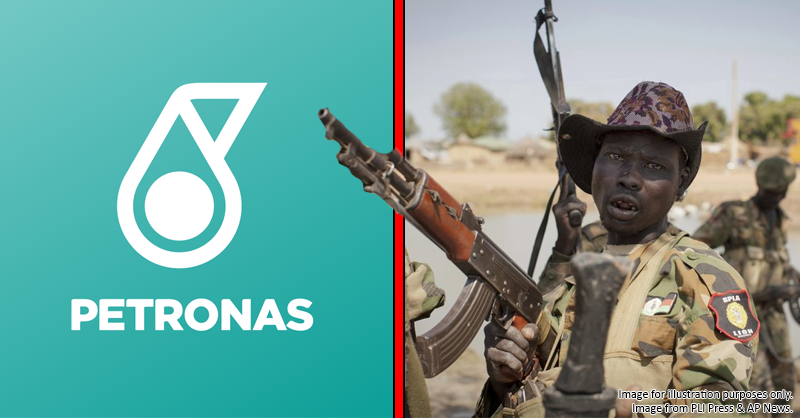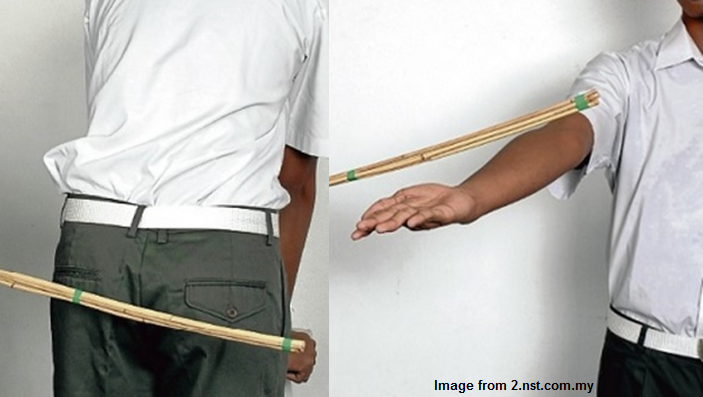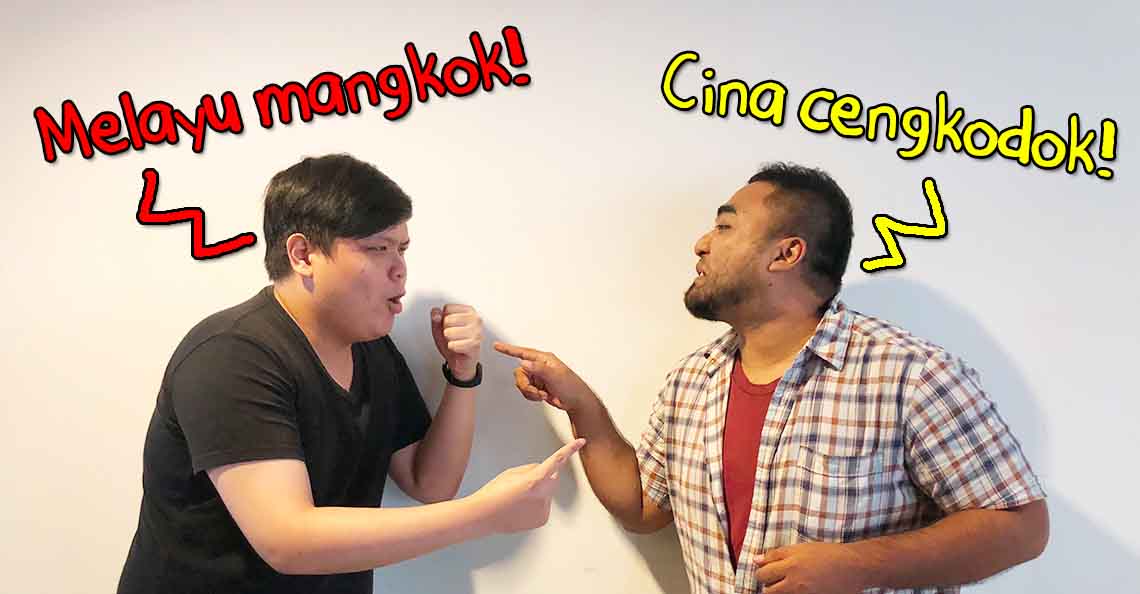Should Malaysia make caning children illegal at home?
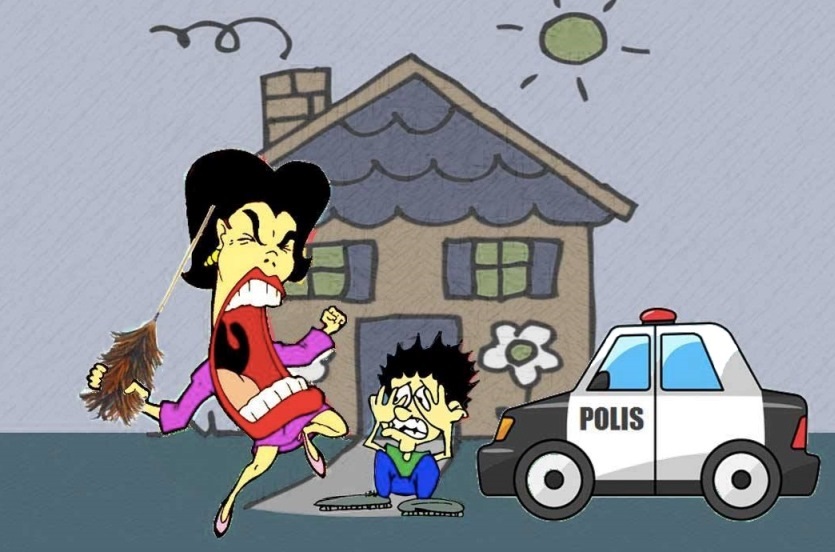
- 360Shares
- Facebook349
- Twitter2
- LinkedIn1
- WhatsApp2
OMG is Malaysia finally going to outlaw the caning of children?
The Rakyat Post reported that Parliament will debate a new Act to impose penalties against parents who cane their children. According to the Jan 25 report, Women, Family and Community Development Minister Datuk Seri Rohani Abdul Karim said they had no choice but to make caning an offence because Malaysia signed the Convention on the Rights of Children (CRC).
Are you a parent reading this? Are you going, “OMG then howmagonna discipline my kids now?”
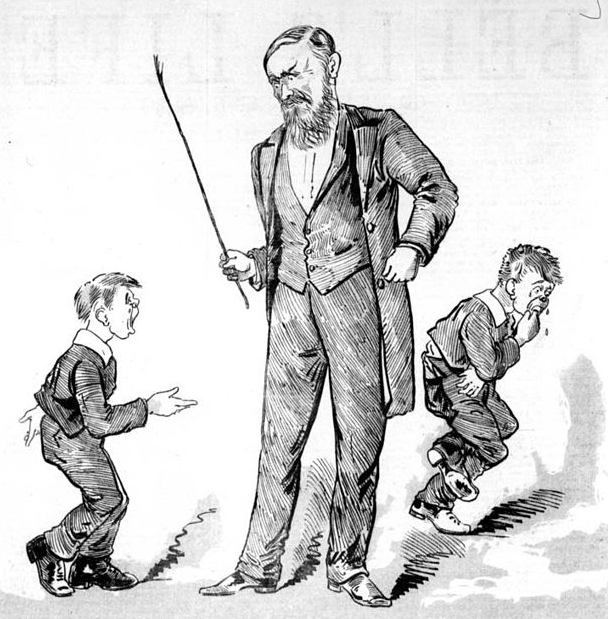
Chillax, parents! Caning is not about to become illegal in Malaysia. The Star’s report on Jan 26 clarified that actually Parliament will discuss ending the caning of minors in court, NOT at home.
But now that the question’s out there…should there be a law against caning your kids at home?
Where is the legal ‘line’ for caning now?
Generally caning has always been accepted in Malaysian society……..errr, right guys? Nobody’s parents got sent to jail for a standard caning? Anyone??
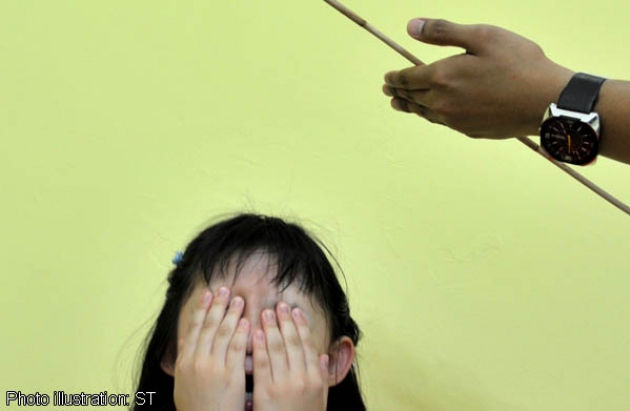
The law doesn’t exactly say ‘caning is illegal’, but if you look at our current Child Act 2001, Section 31, a person can be fined up to RM20,000 or jailed 10 years or both if found guilty of ‘abuses, neglects, abandons or exposes the child in a manner likely to cause him physical or emotional injury’.
Honestly what do ‘abuses’ or ‘physical injury’ even mean in this context? A 5-second stinging ouchie? Bruising? Drawing blood? Where is the line drawn?
Well to be more specific, the Child Act defines physical injury as “substantial and observable injury to any part of the child’s body as a result of non-accidental application of force or an agent to the child’s body that is evidenced by, amongst other things, a laceration, contusion, abrasion, scar, fracture or other bone injury, dislocation, sprain, haemorrhaging, rupture of a viscus, burn, scald, loss or alteration of consciousness or physiological functioning, or the loss of hair and teeth.”

Yeah, the ‘average’ caning wouldn’t result in those types of injuries la so that’s why caning isn’t declared illegal at home in Malaysia.
What about caning in other countries?
Just because Malaysian parents won’t be jailed for caning kids here, it doesn’t mean they can do it in countries where physical punishment of children is culturally and legally prohibited, like Sweden. The case of Azizul Raheem Awalludin and Shalwati Norshal who were jailed for caning their children is proof that Sweden’s definition of child abuse is on a whole other level from ours.

On the whole, Malaysians were sympathetic towards the parents, according to The Sunday Times. After all caning is culturally accepted in Malaysia. Our parents kena from our grandparents… our grandparents kena from our great-grandparents… But how do the rules of caning differ from country to country?
Japan
Law: Corporal punishment is lawful in the home, EXCEPT in Kawasaki City. But in schools it has been outlawed since 1947.
Reality: According to Japan’s Health, Labor and Welfare Ministry, 73,765 cases of abuse were reported in 2013! That’s nearly 70,000 more than Malaysia!! But of course that does not mean the situation in Japan is worse than Malaysia. It could just mean that more parents in Japan are being caught! The Ministry confirmed that it’s definitely a shocking rise in the trend, since the first nationwide count in 1990 of just 1,101 cases.
South Korea
Law: Corporal punishment is still lawful in the home and at school, EXCEPT in Seoul. It has been prohibited in Seoul since 2012.
Reality: The laws regarding discipline in Korea are still considered insufficient by international standards. A survey in The Associated Press’ article showed that 80% of parents physically punish children. Government data revealed a rising trend in child abuse, 6,403 in 2012 from 6,058 in 2011 and 5,657 in 2010. Severe abuse in schools have become so bad that the Education Ministry banned teachers from using broom sticks, ice hockey sticks, slippers, belts or attendance books on students.
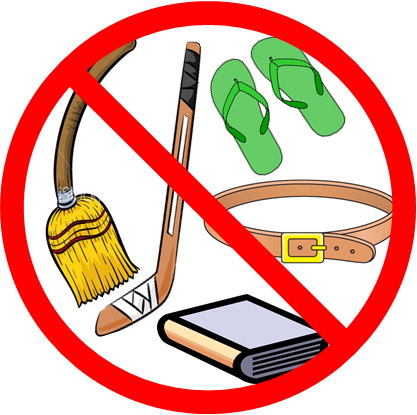
China
Law: Corporal punishment is lawful in the home but not at school. The school law was implemented in 1986 because it goes against communist ideology.
Reality: China University of Criminal Science and Law’s criminal law expert Pi Yijun said parents are seldom jailed because the law is vague. “The clauses we have in our child protection laws are way too broad and over-generalised to be applied to individual cases,” he explained. It’s really sad because bruises do not count ‘intentional injuries’ under Chinese criminal law. Even a scar longer than 9cm can be recognised as a minor injury (?!). Basically, you could say there is no ‘line’ to indicate what’s ok and what’s not.
Sweden
Law: We all know where Sweden stands with physical punishment. By law, it’s banned everywhere, even at home. Sweden was the first country to outlaw the practice in 1979.
Reality: A 2009 review of the 30 years since the ban, showed that physical punishment declined consistently. After 2000, only a few percent of total children experienced smacking (so syok). In line with that, the reporting of cases has increased since the 80s, showing that society won’t tolerate any violence towards children.
By 1981 (just 2 years after the ban started) over 90% of Swedish households knew of the rule. How did the government reach the people? Through a large public campaign, pamphlets distributed to every household with children and information printed on milk cartons. So efficient right?

UK
Law: Corporal punishment is permitted in the home. The Children Act 2004 allows ‘reasonable punishment’, but it has been outlawed in schools throughout the UK.
Reality: Still, the National Society for the Prevention of Cruelty to Children (NSPCC) reports that over half a million children are abused in the UK each year. 13,880 children and young people called ChildLine (a 24-hour telephone helpline) about physical abuse in 2013 alone.
US
Law: Corporal punishment is allowed in the home. In schools, there is no prohibition at federal level.
Reality: Based on the information from a national database of children’s hospital records between 1997 to 2009, there has been a slight increase of abuse by about 5%. Nearly 3 million children (below 18) are abused each year in the US, with poverty as the main cause. according to Cornell’s Bronfenbrenner Center for Translational Research.
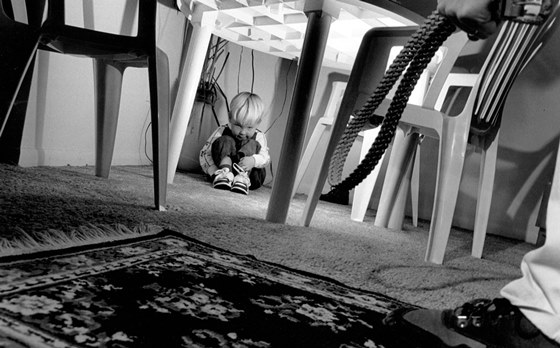
Brazil
Law: Amazingly, Brazil bans corporal punishment on children everywhere, including the home. We so did not expect this! In 2014, the Code on Children and Adolescents 1990 was amended to ban it in the home. But how about in practice?
Reality: Since it’s only been implemented last year, it’s a bit hard to do a reality check now. In Brazil, child abuse aligns more towards sexual and labour. In touristy areas, Brazilian children do jobs like shoe shining, street vending and begging. According to Brazilian authorities more than 250,000 children were victims of prostitution in 2011. Brazil may be progressive in terms corporal punishment but it looks like they need to work on other areas of abuse.
.
So based on the country comparisons above, it looks like Western and Asian countries (except for Sweden and Brazil) are both fine with smacking in the home. There are 44 countries in the world that have FULLY banned corporal punishment. Check out the list here. What about in Malaysia?
So where do we draw the line on caning?
What’s makes a difference between acceptable discipline and where should we draw the line at abuse?
We realise that culture comes into play as well. In Asian countries like Japan, South Korea and China, disciplining a child is seen as a private family affair that’s none of anyone else’s beeswax. That’s why people seldom report abusive parents to the police. Not only that, the physical way is pretty much the Asian way.
This is situation is probably the same in Malaysia. The latest stats released by the Social Welfare Department are 3,831 cases of abuse reported in 2012 – an increase of 403 cases compared to 2011. But the sad reality is, there are probably a lot more cases that go unreported because of apathy by parents and society.
At the end of the day, it’s all based on how each parent believe in what’s good for their kids and the cultures we grew up with in Malaysia. When we asked around the office on what we were personally OK with and it was collectively agreed that caning should stop before drawing blood. But that’s just the CILISOS gang la. What about you guys?
- 360Shares
- Facebook349
- Twitter2
- LinkedIn1
- WhatsApp2


